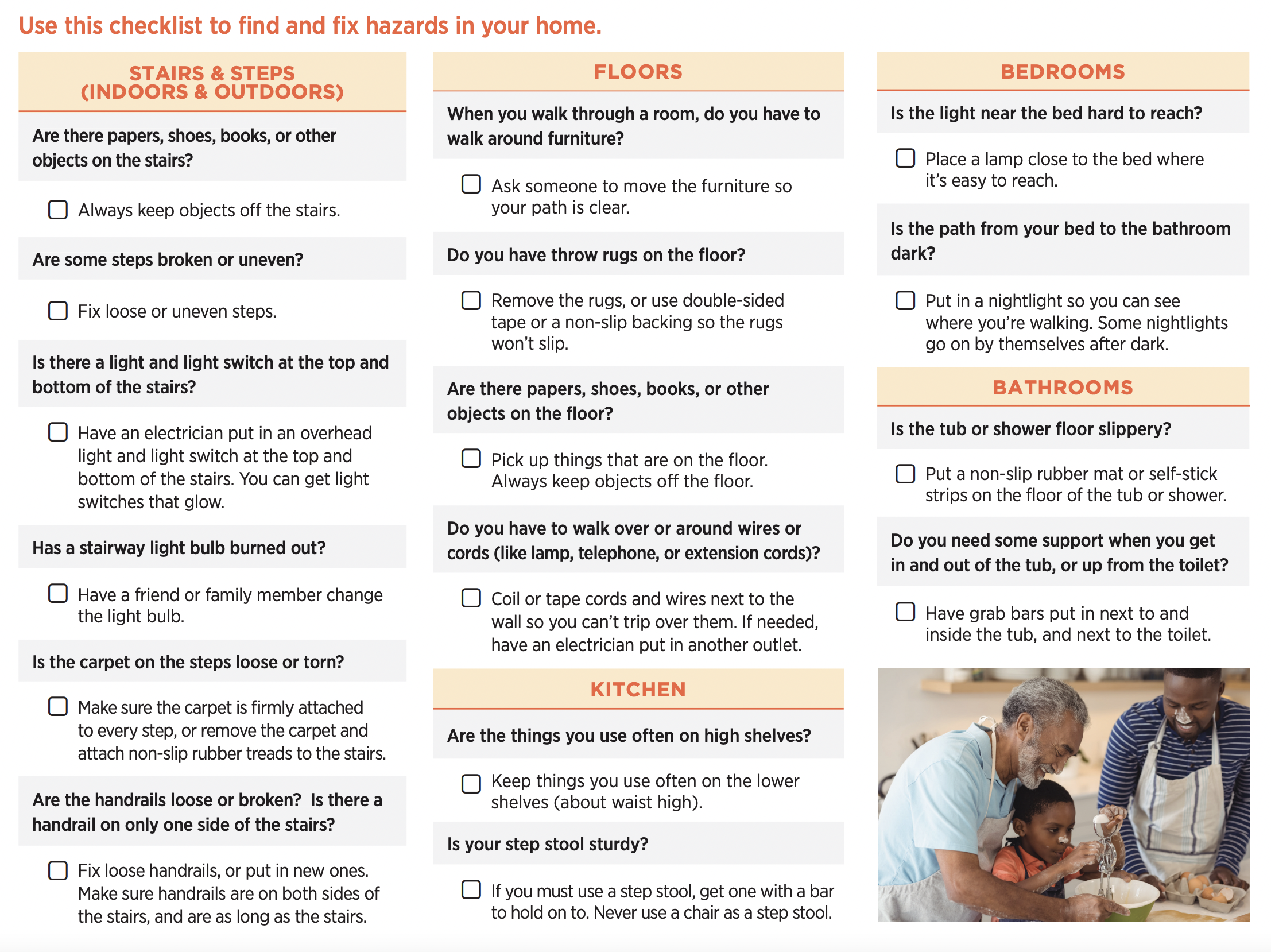Dementia Fall Risk - Questions
Dementia Fall Risk - Questions
Blog Article
Dementia Fall Risk Fundamentals Explained
Table of ContentsDementia Fall Risk - The FactsDementia Fall Risk for BeginnersThe 20-Second Trick For Dementia Fall RiskNot known Facts About Dementia Fall RiskAll About Dementia Fall Risk
Examining loss risk helps the entire healthcare team develop a much safer environment for each person. Make certain that there is a marked location in your clinical charting system where staff can document/reference ratings and record relevant notes associated with drop avoidance. The Johns Hopkins Fall Risk Analysis Device is one of lots of devices your team can utilize to aid avoid negative clinical events.Person drops in healthcare facilities prevail and debilitating adverse occasions that continue in spite of decades of initiative to reduce them. Improving interaction throughout the examining nurse, care group, individual, and client's most involved loved ones may enhance fall avoidance efforts. A group at Brigham and Women's Hospital in Boston, Massachusetts, sought to establish a standard loss prevention program that centered around enhanced communication and patient and family members involvement.

The advancement team emphasized that successful execution relies on individual and team buy-in, assimilation of the program into existing process, and fidelity to program procedures. The group kept in mind that they are coming to grips with exactly how to ensure continuity in program implementation throughout durations of crisis. Throughout the COVID-19 pandemic, for instance, a boost in inpatient falls was related to restrictions in individual engagement together with restrictions on visitation.
The Ultimate Guide To Dementia Fall Risk
These incidents are generally considered preventable. To implement the intervention, companies need the following: Accessibility to Autumn suggestions resources Loss ideas training and re-training for nursing and non-nursing personnel, including brand-new nurses Nursing workflows that permit person and family involvement to conduct the falls assessment, guarantee use of the avoidance plan, and carry out patient-level audits.
The outcomes can be extremely damaging, usually increasing client decrease and causing longer health center stays. One research study approximated stays enhanced an added 12 in-patient days after a patient autumn. The Loss TIPS Program is based on interesting clients and their family/loved ones across 3 primary procedures: assessment, individualized preventative treatments, and auditing to make certain that clients are taken part in the three-step fall avoidance procedure.
The individual assessment is based on the Morse Fall Range, which is a verified autumn danger analysis tool for in-patient health center settings. The from this source scale consists of the 6 most common factors people in hospitals drop: the person fall history, risky problems (consisting of polypharmacy), use of IVs and other outside devices, mental condition, gait, and flexibility.
Each threat factor relate to one or even more actionable evidence-based treatments. The nurse creates a strategy that integrates the treatments and is noticeable to the treatment team, person, and household on a laminated poster or published visual help. Nurses establish the strategy while meeting the patient and the individual's family members.
The Ultimate Guide To Dementia Fall Risk
The poster works as a communication device with various other participants of the person's treatment group. Dementia Fall Risk. The audit element of the program includes analyzing the individual's knowledge of their threat aspects and prevention strategy at the system and hospital degrees. Nurse champs carry out a minimum of 5 individual meetings a month with patients and their family members to look for understanding of the loss prevention strategy

A this hyperlink projected 30% of these falls result in injuries, which can range in severity. Unlike other damaging events that call for a standardized medical action, fall avoidance depends highly on the demands of the individual.
Not known Facts About Dementia Fall Risk

Based on auditing results, one website had 86% conformity and two websites had over 95% compliance. A cost-benefit evaluation of the Fall pointers program in 8 medical facilities approximated that the program expense $0.88 per person to carry out and led to financial savings of $8,500 per 1000 patient-days in straight expenses connected to the prevention of 567 drops over three years and 8 months.
According to the advancement team, companies curious about applying the program should perform a readiness analysis and drops avoidance gaps analysis. 8 In addition, organizations must ensure the needed infrastructure and process for implementation and create an implementation plan. If one exists, the company's Loss Prevention Job Pressure ought to be involved in planning.
Getting The Dementia Fall Risk To Work
To begin, companies should guarantee completion of training components by registered nurses and nursing aides - Dementia Fall Risk. Health center my explanation team should assess, based on the requirements of a healthcare facility, whether to use a digital wellness document hard copy or paper version of the loss prevention plan. Executing groups ought to recruit and train nurse champions and develop procedures for bookkeeping and reporting on autumn data
Personnel need to be included in the procedure of upgrading the workflow to engage people and household in the analysis and prevention strategy process. Equipment must be in location so that devices can recognize why a loss happened and remediate the cause. Much more particularly, registered nurses ought to have networks to provide ongoing responses to both team and device leadership so they can readjust and improve loss avoidance workflows and communicate systemic issues.
Report this page